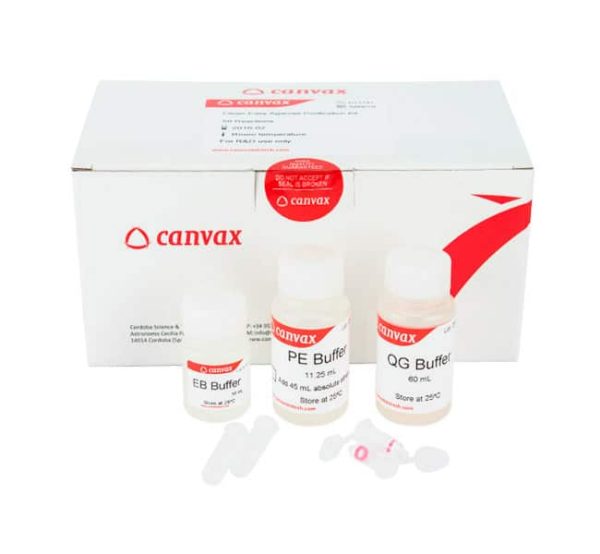Clean-Easy™ Agarose Purification Kit
Cat# AN0070
Size : 50rxn
Brand : Canvax Biotech

Clean-Easy™ Agarose Purification Kit
For an Accurate, Rapid & Highly Efficient DNA Extraction from Agarose Gels
CleanEasy™ Agarose Purification Kit provides an accurate, rapid and highly efficient method to extract DNA from agarose gels. The kit uses HigherPurity™ breakthrough technology based in solubilisation and binding of DNA to a silica membrane in presence of chaotropic salts. Comfortable CleanEasy™ MiniSpin Columns contains an exclusive membrane that allows binding a unique DNA fragment, previously excised from agarose gel.
Detailed information:



